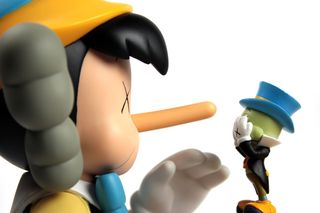
How's Your Poker Face? Why It's So Hard to Sniff Out a Liar (Op-Ed)

This article was originally published at The Conversation. The publication contributed the article to Live Science's Expert Voices: Op-Ed & Insights.
As the annual World Series of Poker gets rolling in Las Vegas later this month, hopeful competitors will be buying in and getting their poker faces on.
But why is it such a challenge to recognise deception – both on and off the poker table – even with past experience to draw on and lots of cues seemingly available?
Most of us are proficient liars. We all lie, probably every day, about something or other. Ever answered the standard question of “how are you?” with a less-than-forthright reply?
We understand the concept of lying before we turn four: Charles Darwin reported his son, a few months shy of his third birthday, trying to lie and there are data suggesting the behaviour can manifest from as young as two years.
And just as everyone engages in deceptions, everyone wants to know how to tell if someone else is lying. It seems as though it should be easy – there are “tells”: sweating, eye movements, micro-expressions, changes in body posture and even changes in speech patterns, that can help us recognise a lie.
Those signals are a type of natural polygraph. Like mechanical lie-detector tests, they rely on a set of physiological changes that occur when we lie. Telling a porky pie, even a so-called white lie, requires cognitive and emotional effort.
Sign up for the Live Science daily newsletter now
Get the world’s most fascinating discoveries delivered straight to your inbox.
Someone’s lying in this video. Can you spot who it is?
Lying activates our autonomic nervous system, and the more venal the lie – the more there is at stake – the more activated the autonomic nervous system becomes.
Why is it so hard to detect a lie?
Pants on fire (if only it was that easy)
The answers are surprising.
First, there is “noise” in the lie-detection system: there are many things that activate the human autonomic nervous system.
Nervousness is a good example. People typically get nervous when
- they are being interrogated, about anything
- they meet for the first time someone to whom they are attracted (which, by the way, is one of the circumstances under which we are very likely to lie about something)
- the stakes are high – when much depends on what they do, or how well they do it
- there’s confrontation involved: a deadline, great expectations … even in-laws.

When we are nervous we sweat more. We sweat a different type of sweat and so we smell different. We fidget and our hair stands on end. We either don’t make any or make exaggerated eye contact. We change the way we speak and, without knowing it, the pitch of our voice changes.
Those changes also occur when we are lying. So it is a myth that there exists a reliable, unique set of cues that signal someone is lying. Some behavioural cues certainly are correlated with lying, but most of those also are correlated with other behaviours too.
Second, there is the cost to the lie-detector of a “false alarm”. Socially speaking, it’s a high-stakes game: the fear of the damage and embarrassment wrought by mistakenly calling someone out on a lie, combined with the high burden of proof involved, stack the decks against successful “prosecution”.
Perhaps most surprisingly though, we are generally less interested than we think in actually discerning the truth. We are, very often, willing to accept as truth lies that smooth social interactions.
Similarly, lies that are congruent with our world-views or, and especially, with our self-image will less often be “called out”. In other words, we actually are very skilled at not recognising lies.
I lie, therefore I think
Of course, the little white lies we tell to keep conversations flowing or to compliment (or at least avoid offending!) our friend/partner/boss seem hardly interesting. Juicier are the venal deceits that, when detected, leave trust shattered and lives changed. As it turns out, all lies, big or small, are tactical deceptions.

Tactical deceptions require the liar to actively manipulate information to mislead another. They are interesting because the creation of such a deception has been interpreted as evidence that the liar has developed a theory of mind – I lie, therefore I think.
If that is true the implications are broad: both old world and new world monkeys have been observed in tactical deceptions. The same is true for other great apes, and even ravens.
Lies, damned lies, and experts
Mark Twain, lamenting his lack of skill with numbers, stratified statistics as a worse than average form of lying.
Nonetheless – and acknowledging there is no small opportunity for irony when a researcher asks about how often people lie – who lies and how often are open questions across the behavioural sciences.
We do know almost everyone lies. Women and men lie on average equally often, but about different things. There is some evidence too that men are better liars than women.
Perhaps unsurprisingly, estimates of how often we lie vary wildly. That is partly because context is important. Lying is, after all, a type of social glue, and – not surprisingly – people lie in surveys.
So the next time you pull up a chair at the casino or with mates at a poker night, remember – while you may find it hard to tell if your opponents are lying, they’re probably also finding you hard to read.
The authors do not work for, consult to, own shares in or receive funding from any company or organisation that would benefit from this article. They also have no relevant affiliations.
This article was originally published on The Conversation. Read the original article. Follow all of the Expert Voices issues and debates — and become part of the discussion — on Facebook, Twitter and Google +. The views expressed are those of the author and do not necessarily reflect the views of the publisher. This version of the article was originally published on Live Science.












